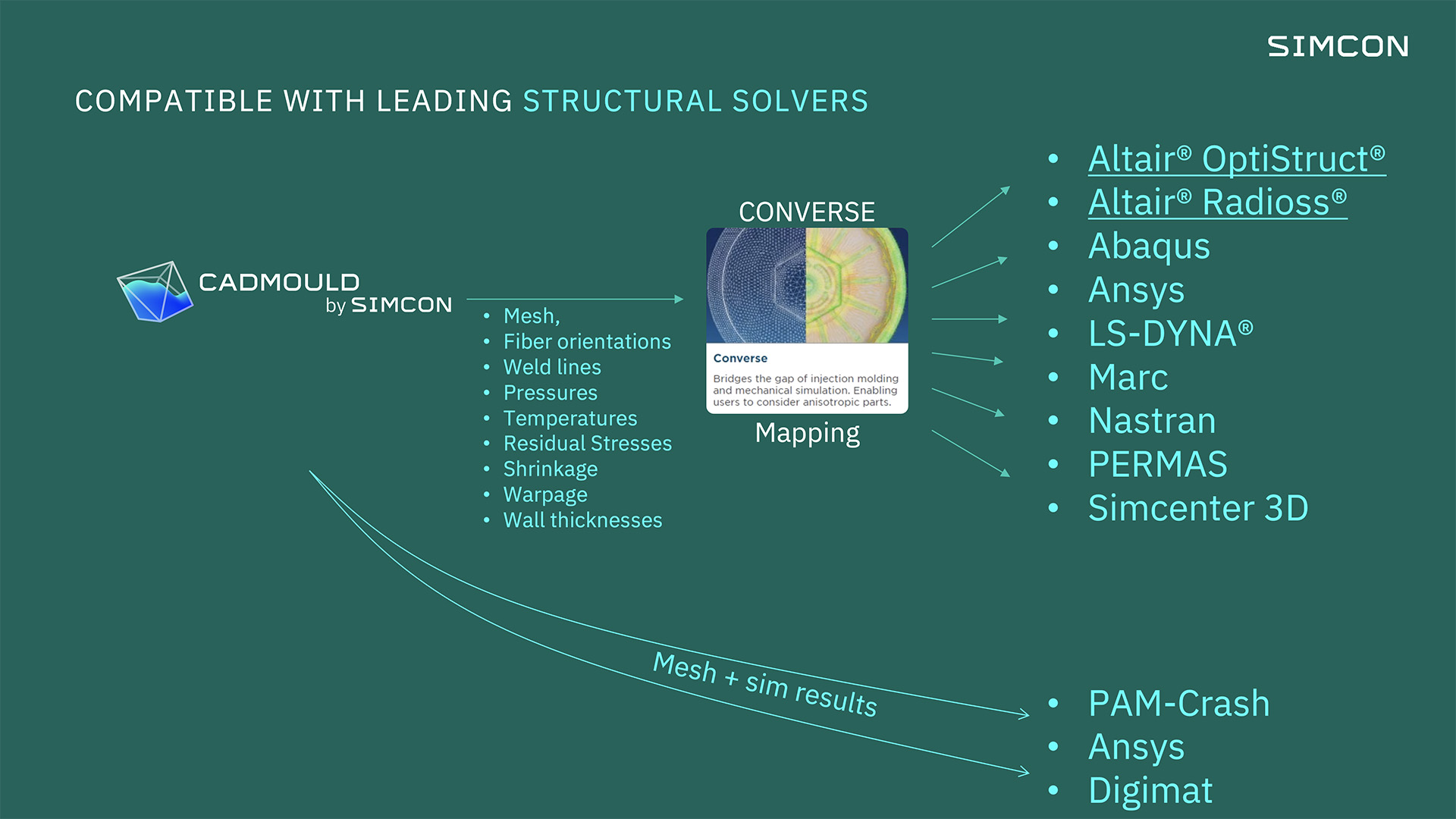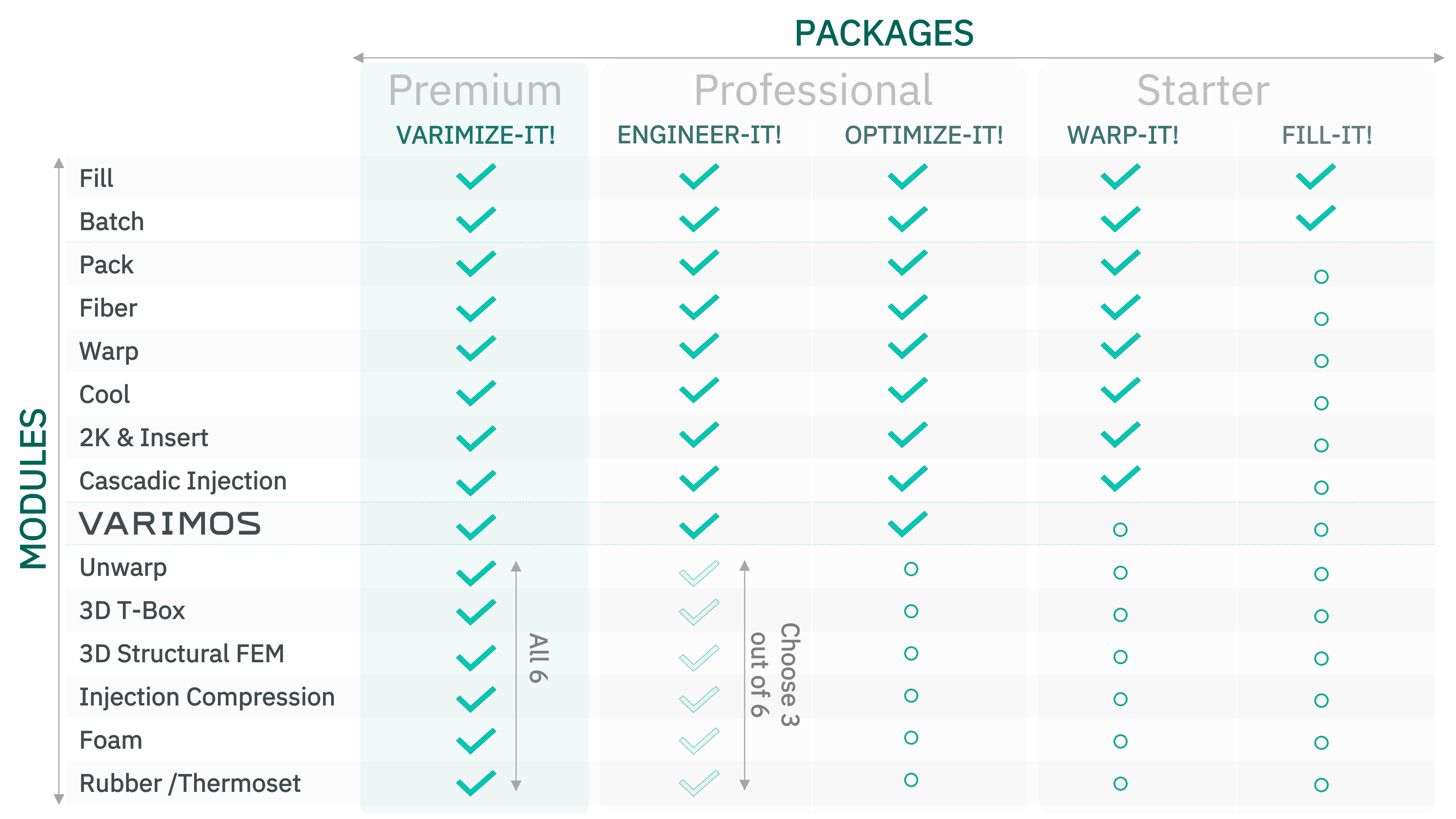Why should you simulate fiber orientations?
In plastic injection molding, fiber orientation has a large impact on anisotropic properties of the material. This significantly impacts both shrinkage and warpage, as well as the mechanical properties of the resulting parts.
CADMOULD Fiber permits you to simulate fiber orientation within the plastic injection molded part. This forms the basis for more accurate shrinkage and warpage computations. It also permits you to export these orientations to other software that you might use for structural simulation, such as Ansys or Digimat, and to many more, via Converse (see below).
RESULTS
CADMOULD Fiber computes the following results:
-
Main direction of fiber orientation
-
Degree of consistency in fiber orientation
Anisotropic properties
Fiber orientations have a meaningful effect on shrinkage and warpage. In combination with our WARP module, FIBER enables you to take such anisotropic effects into account in your warpage simulations.
You can also analyze structural behavior using CADMOULD's FEM module, or export to leading structural solvers (see below) for advanced analysis.

Export to structural solvers
You can export your simulation results to several leading structural solvers and crash testing software.
CADMOULD is directly compatible with Ansys, Digimat and Pam-Crash.
Alternatively, you can also export results to Converse by PART Engineering, and from there, to a large variety of structural solvers.

Packages and modules
CADMOULD Fiber is an ideal complement to our modules Fill (simulation of filling), Pack (simulation of holding pressure and cooling phase) and Warp (simulation of shrinkage and warpage).
It is included in all packages starting with Warp-it! (Though technically, you do also have the option of purchasing or renting it separately.)
READY TO GO?
JOIN A SIMULATION BOOTCAMP!
In just one day, we'll get you up and running, and ready for your first simulation projects.
After the seminar, you'll receive a four-week unrestricted trial version of our software. That way, you can apply what you've learned in the wild, in your first projects.









